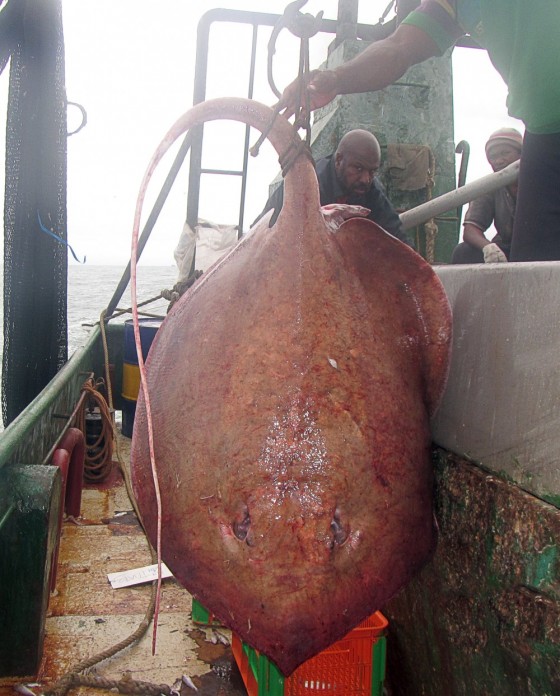Where
Northern Australia, including the Wessel Marine Park
Who
Peter Last (CSIRO Australian National Fish Collection), William White (CSIRO Australian National Fish Collection) and Peter Kyne (Charles Darwin University)
When
2016
Why
The whipray was first observed in 1999 by scientists on an American National Science Foundation project to survey fish parasites in the Arafura Sea. Researchers were initially unable to identify this ray with its unique features and attaining such a large size. It wasn’t until a decade later that a DNA analysis from a tissue sample also confirmed that it might be a new species. A search for more information on this species was subsequently initiated, and as part of a NERP research project on northern Australian euryhaline elasmobranchs more tissue samples were collected from three unidentified rays in the Kakadu National Park. A DNA analysis found these matched the mystery ray from the Arafura Sea. Finally a whole specimen was collected under the NESP program in Cambridge Gulf in the Kimberley region of Western Australia, providing enough data to officially describe the new species.
How
The new species of whipray was described from a single specimen taken from the Cambridge Gulf, Western Australia, and from images of 10 other specimens from northern Australia and Papua New Guinea. Morphological measurements were recorded from both the specimen and images where possible that followed the standards developed for whiprays by Manjaji (2004). Meristic data – data that relates to counting quantitative features of fish such as the number of fins or scales – were obtained from radiographs. Little information regarding the developmental stages of the upper teeth, a feature which is sometimes useful for distinguishing whipray species, was available due to only one whole specimen being available.
What did we learn?
The new species, named Urogymnus acanthobothrium, or the Mumbararr whipray, is one of the largest known whiprays with a disc width of up to 160 centimetres. Their colour appears to be quite variable, and ranges from plain dark greyish brown to yellowish brown in juveniles and a finely and faintly mottled greyish white to yellowish brown in adults. The ventral surface is largely white. Molecular data suggest that it is most closely related to a similar but more widely distributed whipray Urogymnus granulatus. The Mumbararr whipray is known to inhabit waters ranging from 2–60 metres deep, and co-occurs with two other morphologically distinct rays in the region (Urogymnus asperrimus and Urogymnus dalyensis). Like U. dalyensis it occurs in both brackish and marine waters.
What next?
The limited numbers of existing records of the Mumbararr whipray suggest that the new species may be naturally rare or at least with specialised habitat requirements. Although there are insufficient data available to assess the extinction risk status of the species, euryhaline elasmobranchs such as this whipray are generally of conservation concern. Additionally the whipray is likely to possess life history traits similar to other large elasmobranchs (i.e. late age maturity, low fecundity a, long life span and low natural mortality) which result in low productivity and a limited ability to recover from population depletion. Given this, collecting more information on this species will greatly aid further conservation and management for this species.
Related data and publications
Species description and classification information
For more information please contact marinescience@environment.gov.au.


